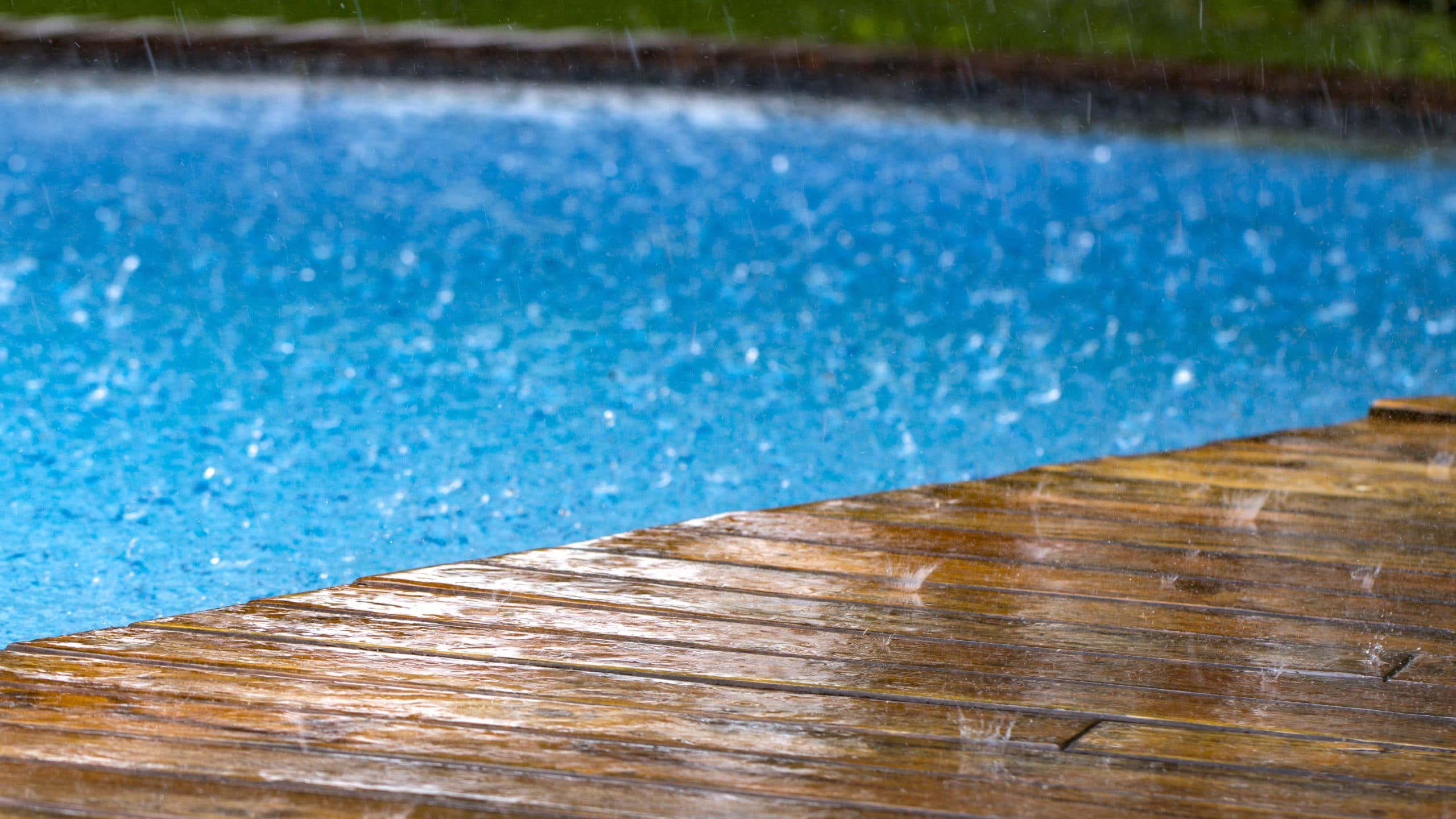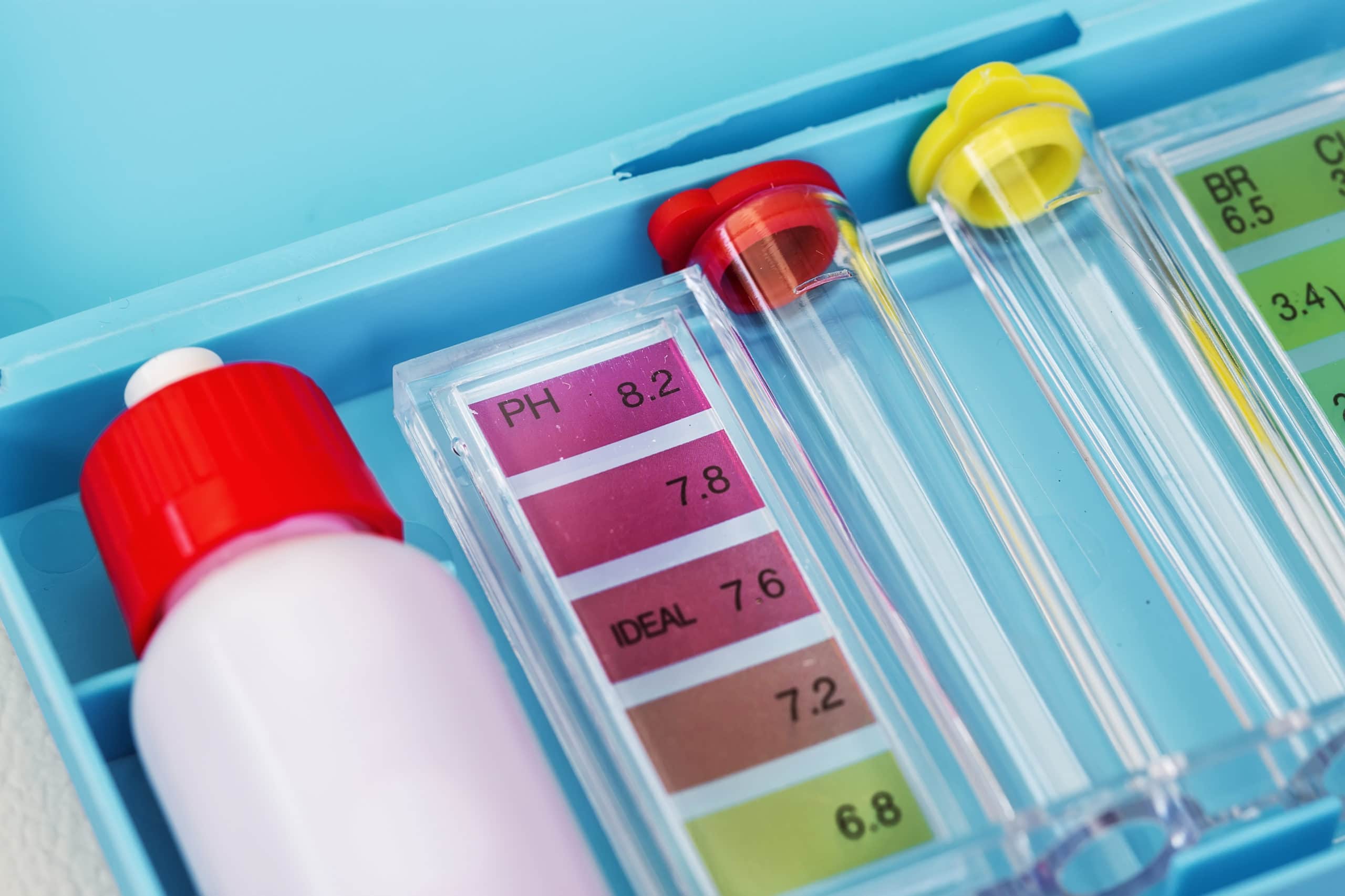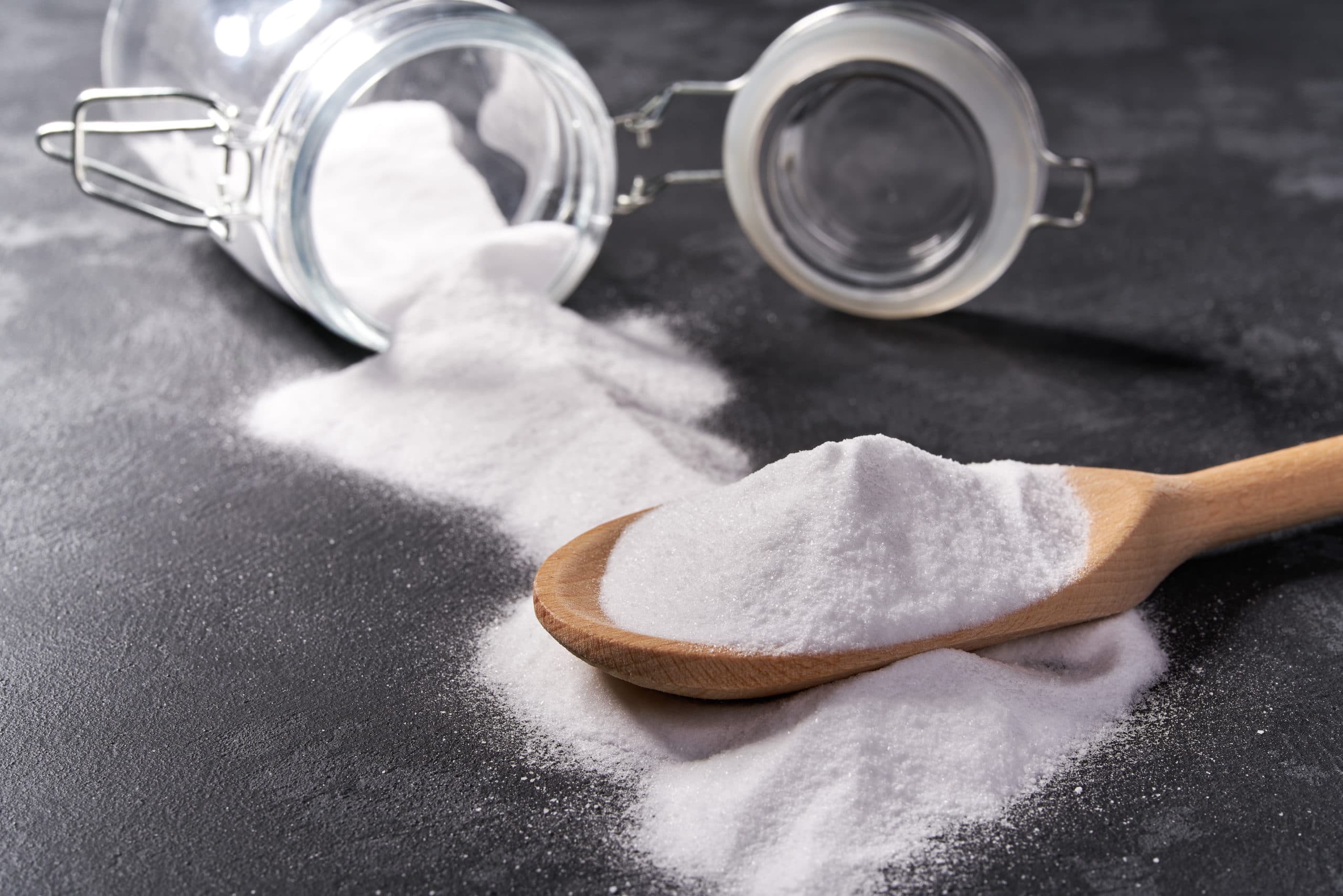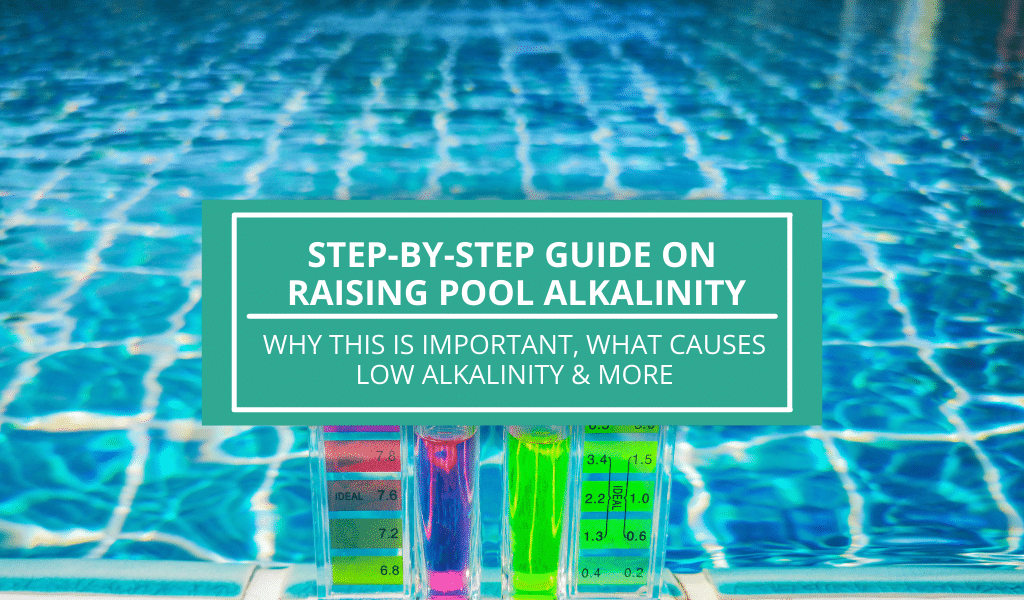If you’re planning a pool construction in your new home or you already own a pool, then one factor you want to put in mind is keeping your pool clean and healthy at all times. Have you ever asked, “what makes my home pool healthy and free of contaminants?”
The answer adds up to three words “balanced water chemistry.” But, how do you achieve this? Maintaining the proper water chemistry in your home pool will amount to keeping a balanced pH level and most of all, standard total alkalinity.
Did you know that the lower the alkalinity of your pool water, the higher its acidic nature? An acidic pool can be damaging to not only your pool. Hence, it is also unsafe for swimmers. So, how do you raise alkalinity in the pool? Let’s find out.
Why Should I Raise Pool Water Alkalinity?
A low pool water alkalinity can cause immeasurable harm to your health. How? The water becomes acidic and causes eyes, nasal, or skin irritation. When it comes to your swimming facilities, you risk getting etched, cracked, pitting, and delaminated pool surfaces.
Even the metal surface might give way to rust as a result of saturated water. Apart from this, you also risk getting a melted metal surface, which can cause stained pool walls under the acidic water.
While these may seem over-the-top, even the slightest alterations in the chemical composition of your pool water will cause an unbalanced pH level, which will lead to the low alkalinity of your pool water. Then, what does this mean? Without the standard alkaline level, adding chemicals like chlorine, which sanitizes the pool will be useless.
What Triggers Low Pool Water Alkalinity?
Several factors may lead to low pool water alkalinity. Some of them include:
Use of Dry Acid
Dry acid, also called muriatic acid is mostly used in keeping your pool water safe. However, it is notorious for decreasing the pH concentration in pool water, hence significantly increasing the alkalinity of the water, which will be slightly too much.
One way to fix this challenge will be to use the prescribed doses, then test the water after six hours to know the alkaline level.
Rainfall

another cause of low pool alkalinity is usually high rainfall. Usually, rainwater lacks a standard alkaline level. So, when it rains hard, the pool may get overflooded, which will significantly reduce the total alkalinity of your pool water.
Use of Freshwater
Many pool owners after draining and backwashing their pool, tend to add freshwater to the already balanced pool. What they do not know is that adding fresh water to the pool may deplete the overall pH concentration and you do not want this.
While various factors enter into low pool alkalinity, if you want to properly maintain your pool water and quickly get a solution to the low alkalinity of your pool, then it is necessary to fully understand how unbalanced pH concentration affects your water.
How Does pH Concentration Affect Swimming Water?
While many people confuse alkalinity to mean the same as pH, keep in mind that these concepts differ completely. Alkalinity is the measurement of the alkaline substances in the pool water.
On the other hand, these same alkaline substances help to increase the pH levels in your pool water. Knowing how high or low the pH levels of your water are will also tell you the level of acidity of your swimming water.
The ideal pH range of any swimming pool should be between 7.4 to 7.6. Having this range will mean your pool water is neither too acidic or have large alkalinity.

When the pH readings are too high or too low, the swimming water becomes unsafe and unhealthy. How? When the water has a high pH range, the calcium found in the water will combine with other chemicals called carbonates found in the surrounding. What results from this is a cloudy pool, which can be harmful.
Apart from this, the pool filter becomes clogged and less effective as it gets filled with the newly formed chemicals called calcium carbonates, which are usually hazardous. To prevent this, you want to constantly make sure that your pH levels do not rip lesser than 7.4.
If this happens to your pool water, you may have to start worrying about the water being too acidic. Acidic water dissolves pool bottoms usually made from grout and plastic. Apart from this, it boosts the development of algae, which are not health-friendly. If your pools are made with metals, they may corrode over time and cause stains to build up.
So, how do you raise alkalinity in your pool water?
Factors to Consider Before Raising Alkalinity in Pool
Raising the alkalinity in your swimming pool is a considerably straightforward process as you could easily employ the do-it-yourself route within minutes or hire professional aid. But, before you initiate this procedure, here are some factors you want to keep in mind:
Every Pool Has Its Pattern
Pools made from metal, cement, and rubber differ in patterns. So, you want to know the ins and outs of your pool to notice the pattern they take and how they react to alkaline increase or increase.
Once you identify this pattern, you want to put them in mind, especially when adding your baking soda. This way, you easily resolve the problem of low and high alkalinity.
The Type Of Pool You Have Will Determine The Alkaline Level
Depending on your pol type, you can easily determine the alkalinity level of your pool. For pols made with fiberglass, concrete, gunite, and vinyl linear materials, the alkaline level should not be more than In 100-120ppm.
Adhere To Package Instructions When Necessary
When you get the necessary chemical solution to help increase alkalinity readings, it is usually best to consider the packaging instructions. This is because your pool size may also be considerably smaller than the normal size. By adhering to packaging instructions, you also easily avoid rising alkalinity levels.
Another thing you want to put in mind is that maintaining proper pool alkalinity levels is crucial for a healthy and comfortable swim at all times. As stated earlier, when these alkaline readings drop excessively, the swimming equipment and pool surfaces will most certainly notice significant damage and deterioration of the equipment, which may cause them to dissolve.
When you strictly adhere to the packaging instructions should help you increase the alkaline level is not more than five to ten minutes.
How to Raise Alkalinity in Pool
If your pool water has a low pH reading, it is usually best to increase the amount of alkalinity in the pool to prevent the water from becoming acidic. This method of raising pool alkalinity is known as buffering. Here are some tips you want to consider when raising pool alkalinity.
Use Baking Soda

While this may seem nonsensical, you want to know that a simple baking ingredient like baking soda easily found in your kitchen will help solve the problem of low pool alkalinity. Baking soda, also called Sodium Bicarbonate is one major chemical used to raise pool alkalinity. This simple chemical solution not only keeps your walls and pool surface free from damage but also prevents metallic surfaces from corrosion, discoloring, and dissolving.
Likewise, it makes the chlorine found in your water effective in disinfecting the pool. In essence, with baking soda, you easily keep the pool free from alarming situations that will cost you a fortune in repairs. But, to utilize this solution, you want to know the right amount of dose to pour as using too much of this substance can be dangerous. Planning on using this solution? Here’s how:
Step 1
Start with testing your pool water
Before pouring in your baking soda, you want to first start with testing the pool water to know the total alkalinity measurement in the pool. Simply do this by using a pool testing strip or kit.
Another testing kit that might work effectively is a pH sensor because when you use this kit and it shows that the pH level is slightly lower than normal, then it would mean that there’s not enough alkalinity in the pool. With this kit, you easily raise pool alkalinity to its standard range without stress.
Step 2
Get your baking soda ready
After testing your pool water, the next step to take will be to get your baking soda ready. While most people do not have this ingredient at home, it would be easier to get your sodium bicarbonate from a local grocery or most preferably, a pool dealer.
Ensure that you get this product in large amounts to avoid double expenses if your pool alkalinity is very low.
Step 3
Add your baking soda
Now that we’ve come to the actual process of adding your sodium bicarbonate, you want to always put this in mind, “it is better to add too little than too much!” Why? To avoid acidic water. Determining the actual amount your pool may need is usually difficult. So, it is best to start pouring in your baking soda in little amounts.
In another case, try adding around fifty percent of the recommended quantity, then test the water before adding the rest. Doing this will help you avoid the issue of high alkalinity. If after buying the product and you still don’t know how to add the sodium bicarbonate, then read the instructions on the packaging.
Step 4
Retest and Reapply
The last thing you want to do is to test the pool alkalinity again to know if you have succeeded in bringing it to the normal level. But, before doing this, wait for six to Twenty-four hours to enable the baking soda to dilute in your pool.
If after testing and you find out that the pool alkalinity is still low, then proceed to add your baking soda in small quantities. After this, repeat the process of testing. Once your pool alkalinity is balanced, you enjoy swimming without fear of health-damaging issues.
Conclusion
As a pool owner, water chemistry is one delicate subject you want to strictly watch for in all seasons. This is because a balanced alkaline level leads to a healthy swimming pool while low alkalinity can suggest health hazards, especially for swimmers.
Hence, it becomes necessary to keep balance pool chemistry by conducting regular check-ups and tests. This will save you the cost of having to resurface or install new swimming equipment.
Frequently Asked Questions
What Does Alkalinity Mean?
Alkalinity is a way to measure all dissolved alkaline substances in your swimming water. Measuring the alkalinity of your pool water will help you maintain pool water chemistry. A rightly balanced pool water will have an alkaline concentration at 80 to 130 parts per million (ppm).
If you test for alkalinity and find get low concentrations, then it may mean that your water has is greatly contaminated. On the other hand, high alkalinity will make the added chlorine chemicals in your water ineffective and your pool water will lose its clean nature.
How do I Know When my Pool Alkalinity Is Low?
First, you want to know that the ideal total alkalinity range of your pool is 80 to 120ppm. To know when your pool alkalinity is low, make sure to test your pool water twice every week using a test strip. If this method does not work for you, you also want to try taking a sample of your water for verification to the test station once every month.
Why Should I Add Baking Soda to My Pool?
Baking soda, with its botanical name as sodium bicarbonate, is a natural alkaline, with a pH level of 8. When you add this powdery substance into your pool water, you succeed in balancing your water chemistry to improve its clarity and stability by raising both the alkalinity and pH level.
While many people opt for commercial pool products to raise pool alkalinity and pH level, you want to know that a major and active ingredient utilized in making these products is baking soda. So, it is best to use baking soda in its pure form.
What Quantity of Baking Soda Should I Add to My Pool Water?
As a rule, using 680 grams (1.5 pounds) of baking soda per 37,854 liters (10,000 gallons) of pool water is ideal as it will help raise the alkalinity by more than ten parts per million (ppm). Before doing this, you want to know the amount of water your pool holds.
Once you find out the volume, measure your baking soda and add in smaller amounts. You want to avoid adding it at a go because doing so might affect the pH level.
Can I Use Soda Ash as Replacement for Baking Soda?
Baking Soda, also known as Sodium Bicarbonate is used to raise the alkalinity of your water and also somewhat increase the pH level. On the other hand, Soda Ash also known as Sodium Carbonate is used in the pool to increase the pH and slightly boosts water alkalinity. Let’s break this down.
For example, when you get a pH reading between 7.0 to 7.5 in 37,800 liters of pool water, then it would roughly mean that your pool may take 20 pounds of baking soda. But, this may be over the top as it will considerably increase your water alkalinity by 145ppm.
On the other hand, if you only aim to raise the pH level by 0.5, then 340grams (120 ounces) of soda ash would work best as they only increase pool alkalinity by 8ppm. What this means is that baking soda functions exceptionally for increasing alkalinity while soda ah helps to raise pH reading.
Will Baking Soda Keep Algae Away from the Pool?
Most likely not. When you add your baking soda to the pool and successfully increase pH and alkalinity, this helps the chlorine and other purifiers kill the algae.
Does Baking Soda Clear Up Cloudy Pools?
Not precisely, but it aids in the process. Under-sanitized water will lead to a cloudy pool. To avoid this, make sure that you have a balanced pool water chemistry before adding sanitizer, as adding a huge amount of baking soda can also cause cloudy pool water.
Does Baking Soda Pose any Health Risks?
The FDA recognizes baking sodas as a direct food additive. Hence, this chemical is relatively safe to use. However, you want to be careful when adding this powdery substance to your water because it can easily get inside your eye, especially in a windy environment. Baking soda also works exceptionally for keeping your teeth clean.

